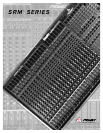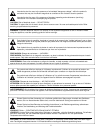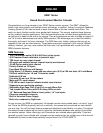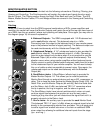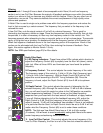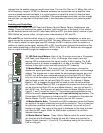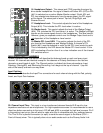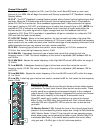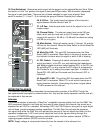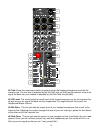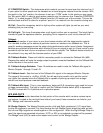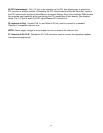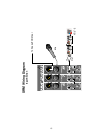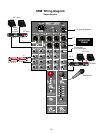
21. Insert: An Insert jack is provided to allow for an external device
(i.e., compressor, effects, tuner, etc.) to be placed in the signal path
pre EQ. The jack is wired: Tip=Send, Ring=Return, and
Sleeve=Ground. A switch in the jack normally connects the Tip and
Ring to continue signal flow when the jack is not in use. When a plug
is inserted into the jack, the signal chain is broken and the signal
must be properly returned.
22. Pad Switch: The Pad Switch, when activated (down), attenuates
the input signal by 20 dB. Use of this pad increases the dynamic
range to accommodate a higher input level before clipping. This is
extremely useful when using sources such as wireless microphones.
By increasing the output level at the receiver and using the Pad
Switch you optimize the signal to noise ratio resulting in a quieter
signal.
23. Input Gain: This control varies the gain of the channel input to
increase the dynamic range. The input gain can be adjusted between
the range of +10 dB to +60 dB [-10 dB to +40 dB when the Pad
Switch (#22) is used]. Setting the input gain can be accomplished by
pressing the PFL Switch (#41) in and adjusting for a 0 dB (+4 dBu)
level at the R meter (#12). You will want to to do this one channel at
a time as any channel selected for PFL will be displayed on the
meter. This process will maximize the signal to noise ratio resulting in
a more quiet mix.
24. +48V Phantom Power: Applies +48 VDC to each channel’s XLR
balanced input. The phantom power is switched in groups of eight
input channels. A phantom power switch is located in the last
channel of each group (i.e., channel 8 contains the switch for chan-
nels 1 thru 8, 16 for 9 thru 16 and so on). This switch will activate the
phantom power for that channel and the seven previous channels
before it. Do not connect devices which cannot handle this voltage
(some wireless mic receivers may be damaged, so consult their man-
uals). Phantom power is not available at the talkback mic input.
NOTE: When the SRM 2410’s inputs are connected in parallel with
a Front of House (FOH) console, the Phantom Power should be
supplied by the FOH mixer instead of the SRM. In such applications
(typical) the SRMs Phantom Power should be turned off. The SRM’s
Phantom Power is designed and recommended only when the mixer
is used as a stand-alone, FOH console.
25. Polarity Switch (found on the first six channels of each bank
of eight): This switch reverses the polarity of the signal after the
transformer. Therefore, it will not affect the thru signal going to the
FOH mixer. The polarity switch is very useful in correcting frequency
cancellation due to out of phase signals. The multiple microphone
configurations used on drum kits are a common spot where this
problem presents itself. During a sound check, a quick push-on/push-
off test of the drum channel’s Polarity Switch should provide an
audible indication of the switch’s proper position.
9
21
24
23
27
28
29
30
31
32
33
22
26
25



